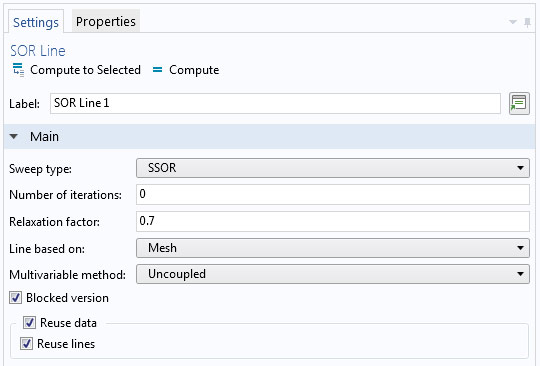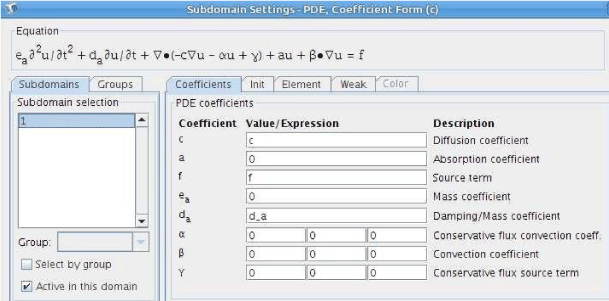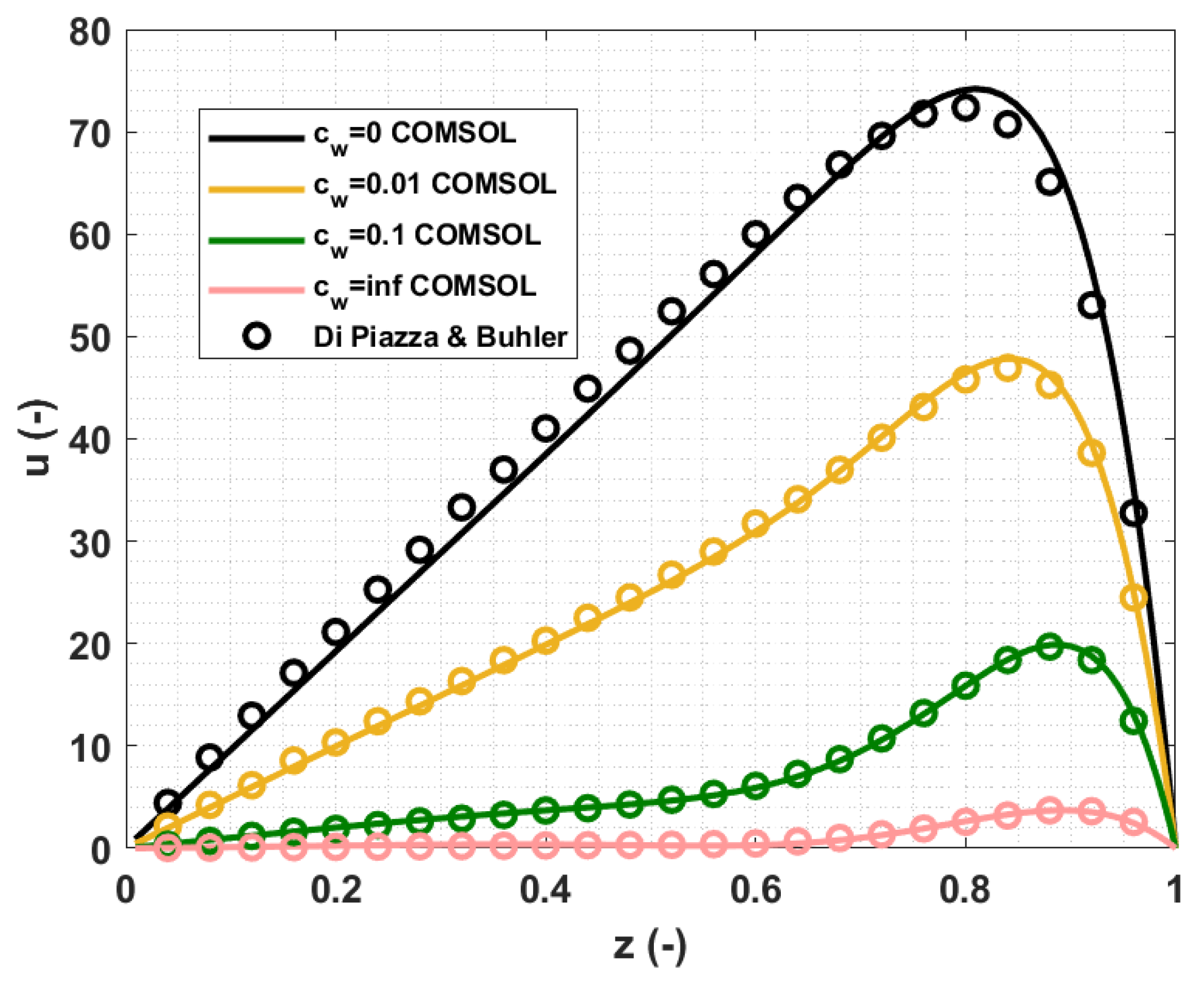
In these cases, the time step gets reduced and the step is repeated. The adaptive time step algorithm can potentially use a time step that is too large, so that the error test does not pass for an already taken step. The computed solution from a time step gets accepted if the solution fulfills the predefined error bounds subject to the given tolerances.

Starting from initial values, the unknown transient degrees of freedom are determined by means of time-integration schemes. Transient simulations need to compute a discrete solution that reflects the time evolution. In an upcoming blog post, we will explain which measures to take to improve the simulation efficiency in cases of small time steps. Here, we will discuss the mechanisms used for selecting the time step and discretization order. During the simulation, you might find that the time steps get smaller and the solution takes a long time to complete.
Subsubsection 3.5.4.When tracking the log for a time-dependent simulation, you can observe that the solver uses varying time steps and discretization orders. Subsubsection 3.5.4.1 Backflow Stabilization. Subsection 3.5.4 Special Boundary Conditions. Subsection 3.5.3 Spatial Discretization. Subsection 3.5.2 Temporal Discretization and Linearization. Section 3.5 Computational Fluid Dynamics. Subsubsection 3.4.7.2 Updating Solid-Bound Molecule Concentrations. Subsubsection 3.4.7.1 Virtual Work and Linearization.  Subsection 3.4.6 Electric Potential and Partition Coefficient Derivatives. Subsection 3.4.4 Linearization of External Virtual Work. Section 3.4 Weak Formulation for Multiphasic Materials. Subsection 3.3.2 Linearization of External Virtual Work. Subsubsection 3.3.1.3 Linearization along. Subsubsection 3.3.1.2 Linearization along. Subsubsection 3.3.1.1 Linearization along. Subsection 3.3.1 Linearization of Internal Virtual Work. Section 3.3 Weak Formulation for Biphasic-Solute Materials. Section 3.2 Weak formulation for biphasic materials. Section 3.1 Weak formulation for Solid Materials. Subsection 2.13.2 BFSI Continuous Variables. Subsection 2.13.1 BFSI Governing Equations. Subsection 2.12.1 FSI Governing Equations. Section 2.12 Fluid-Structure Interactions. Subsection 2.11.1 Mass and Momentum Balance. Subsection 2.10.3 Mixture with Negligible Solute Volume Fraction. Subsection 2.10.1 Solid Matrix and Solid-Bound Molecular Constituents. Subsection 2.9.3 Donnan Equilibrium Swelling. Section 2.7 Triphasic and Multiphasic Materials. Subsection 2.4.4 Transversely Isotropic Hyperelasticity. Subsection 2.4.3 Nearly-Incompressible Hyperelasticity. Subsection 2.4.2 Isotropic Elasticity in Principal Directions. Subsection 2.4.1 Isotropic Hyperelasticity. Subsection 2.3.1 The deformation gradient tensor. Section 2.3 Deformation, Strain and Stress. Subsection 14.12.4 Selecting mesh items. Subsection 13.3.2 Adding data via an equation. Subsection 13.3.1 Adding data from a text file. Subsubsection 11.4.2.4 Deleting GV Widgets. Subsubsection 11.4.2.3 Adding GV Widgets. Subsubsection 11.4.2.2 Setting the GV widget's properties. Subsubsection 11.4.2.1 Selecting and moving widgets. Section 10.2 FEBio Launch Configurations. Chapter 10 Running FEBio from FEBioStudio. Section 7.4 Assigning Boundary Conditions. Subsection 7.3.5 Initial Fluid Pressure. Subsection 7.1.12 Prescribed Solute Concentration. Subsection 7.1.11 Prescribed Temperature. Subsection 7.1.10 Prescribed Fluid Pressure. Subsection 7.1.9 Prescribed Shell Displacement. Subsection 7.1.8 Prescribed Shell Rotation. Subsection 7.1.7 Prescribed Displacement.
Subsection 3.4.6 Electric Potential and Partition Coefficient Derivatives. Subsection 3.4.4 Linearization of External Virtual Work. Section 3.4 Weak Formulation for Multiphasic Materials. Subsection 3.3.2 Linearization of External Virtual Work. Subsubsection 3.3.1.3 Linearization along. Subsubsection 3.3.1.2 Linearization along. Subsubsection 3.3.1.1 Linearization along. Subsection 3.3.1 Linearization of Internal Virtual Work. Section 3.3 Weak Formulation for Biphasic-Solute Materials. Section 3.2 Weak formulation for biphasic materials. Section 3.1 Weak formulation for Solid Materials. Subsection 2.13.2 BFSI Continuous Variables. Subsection 2.13.1 BFSI Governing Equations. Subsection 2.12.1 FSI Governing Equations. Section 2.12 Fluid-Structure Interactions. Subsection 2.11.1 Mass and Momentum Balance. Subsection 2.10.3 Mixture with Negligible Solute Volume Fraction. Subsection 2.10.1 Solid Matrix and Solid-Bound Molecular Constituents. Subsection 2.9.3 Donnan Equilibrium Swelling. Section 2.7 Triphasic and Multiphasic Materials. Subsection 2.4.4 Transversely Isotropic Hyperelasticity. Subsection 2.4.3 Nearly-Incompressible Hyperelasticity. Subsection 2.4.2 Isotropic Elasticity in Principal Directions. Subsection 2.4.1 Isotropic Hyperelasticity. Subsection 2.3.1 The deformation gradient tensor. Section 2.3 Deformation, Strain and Stress. Subsection 14.12.4 Selecting mesh items. Subsection 13.3.2 Adding data via an equation. Subsection 13.3.1 Adding data from a text file. Subsubsection 11.4.2.4 Deleting GV Widgets. Subsubsection 11.4.2.3 Adding GV Widgets. Subsubsection 11.4.2.2 Setting the GV widget's properties. Subsubsection 11.4.2.1 Selecting and moving widgets. Section 10.2 FEBio Launch Configurations. Chapter 10 Running FEBio from FEBioStudio. Section 7.4 Assigning Boundary Conditions. Subsection 7.3.5 Initial Fluid Pressure. Subsection 7.1.12 Prescribed Solute Concentration. Subsection 7.1.11 Prescribed Temperature. Subsection 7.1.10 Prescribed Fluid Pressure. Subsection 7.1.9 Prescribed Shell Displacement. Subsection 7.1.8 Prescribed Shell Rotation. Subsection 7.1.7 Prescribed Displacement. 
Subsection 7.1.6 Zero Solute Concentration.Subsection 7.1.2 Fixed Shell Displacement.Chapter 7 Boundary Conditions and Loads.Section 6.5 Creating a Solid-Bound Molecule Table.Section 6.2 Setting material parameters.Section 5.4 Creating and Editing a Mesh.Chapter 5 Creating and Editing Geometry.Chapter 4 Creating, Loading, and Saving Models.Subsection 3.14.11 Model Repository Options.Subsubsection 3.10.5.3 Adding or Removing Files.Subsubsection 3.10.5.2 The Add Publication Dialog.Subsubsection 3.10.5.1 Adding or Editing Project Details.Subsection 3.10.5 The Upload/Modify Wizard.Subsection 3.10.4 The Upload Permission Request Dialog.

Subsection 3.10.3 Managinig Your Uploads. Subsection 3.10.2 Browsing and Downloading. Subsection 3.10.1 Connecting to the Repository. Subsection 3.8.2 The Model Viewer Panels. Section 3.1 The Graphical User Interface. Subsection 2.4.3 Transforming an object. Subsection 2.4.1 Navigating the Graphics View.








 0 kommentar(er)
0 kommentar(er)
